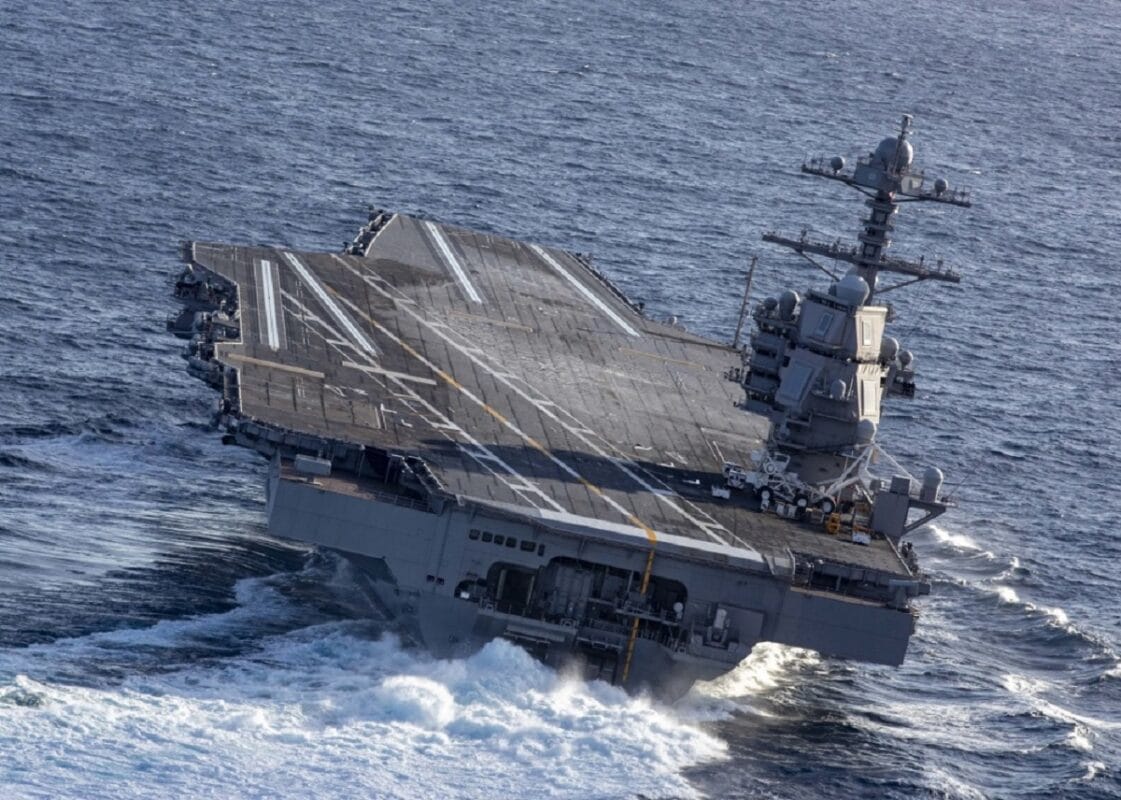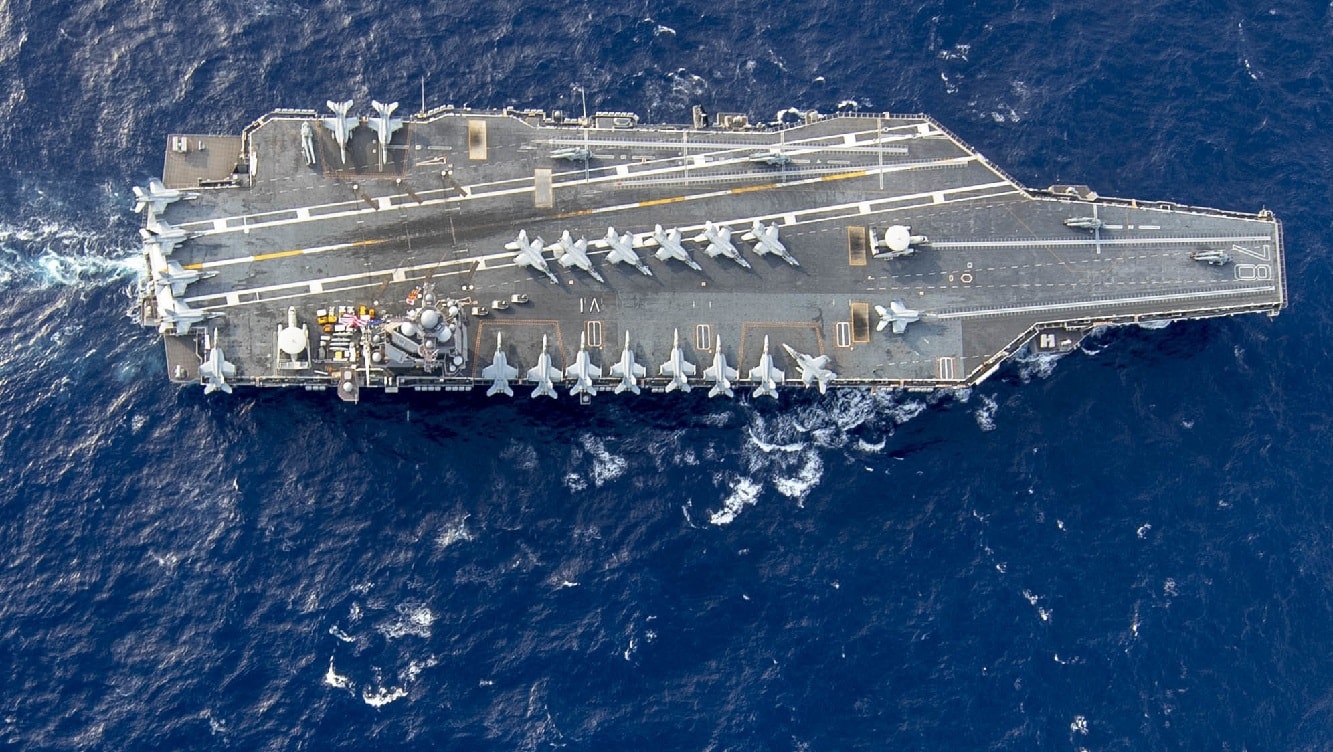U.S. Navy aircraft carrier USS Gerald R. Ford’s Deployment Delayed Due to Nor’Easter: Bad weather and warships don’t mix, which is why the United States Navy deployed several warships to sea last week as Hurricane Ian approached Florida. Even in port, vessels can be damaged and the Navy didn’t want to take any chances with its smaller vessels.
Now with severe weather forecasted for Hampton Roads as a nor’easter looms to the south, the Navy is also playing it safe with its largest and most expensive warship, USS Gerald R. Ford (CVN-78). The newest carrier, which is already years late and 27 percent over budget, is going to be delayed yet again thanks to “Mother Nature.” Her first deployment has been postponed due to the “changing weather conditions,” the U.S. 2nd Fleet announced on Sunday.
The Navy had been closely monitoring the weather but hasn’t been able to provide any additional information on when the carrier will finally be deployed from Naval Station Norfolk. The change in plans had already impacted public and media access to the base for the carrier’s departure. The Navy had planned to forgo the traditional, pier-side send-off for Ford due to the changing weather conditions and out of caution.
A new deployment date will only be set when the weather finally allows.
The Hampton Roads area has also been impacted by coastal flooding not seen in more than a decade after the remnants of Hurricane Ian swept through the region. Much of the area is now under a flood warning until Tuesday.
The National Weather Service Wakefield had predicted 55-60 mph gusts along the coast late Sunday, persisting into Monday. The seas, meteorologists said, would be extremely dangerous, with waves as high as 15 feet. While it wouldn’t be enough to sink the carrier, it would certainly impact operations and make conditions unnecessarily hazardous for the crew.
Lessons From History
Throughout history, ships large and small have been lost in fierce storms – and naval historians often note the 15 British warships that sunk in the hurricane season of 1780, which has been described as the worst in recorded history. The loss of those vessels likely impacted the outcome of the Battle of Yorktown a year later as the Royal Navy was stretched beyond a breaking point during the American Revolution.

ATLANTIC OCEAN (Oct. 29, 2019) USS Gerald R. Ford (CVN 78) conducts high-speed turns in the Atlantic Ocean. Ford is at sea conducting sea trials following the in port portion of its 15 month post-shakedown availability. (U.S. Navy photo by Mass Communication Specialist 3rd Class Connor Loessin)
Fast forward some 160 years, when Typhoon Cobra (sometimes known as Halsey’s Typhoon) quickly moved across the South Pacific and caught off guard the United States Navy’s Third Fleet’s Fast Carrier Task Force (TF) 38. The storm swept over seven fleet carriers, six light carriers, eight battleships, 15 cruisers, and about 50 destroyers. Some aircraft were literally blown off the decks, while 10 vessels were seriously damaged. The Iowa-class battleship USS Wisconsin (BB-65) was able to ride out the storm, but three destroyers including USS Hull (DD-350), USS Monaghan (DD-354), and USS Spence (DD-512) weren’t so lucky. All capsized and sank – killing everyone on board.
Given the potential wrath of Mother Nature, the U.S. Navy shouldn’t press its luck with its latest carrier.
A Senior Editor for 1945, Peter Suciu is a Michigan-based writer who has contributed to more than four dozen magazines, newspapers, and websites with over 3,000 published pieces over a twenty-year career in journalism. He regularly writes about military hardware, firearms history, cybersecurity, and international affairs. Peter is also a Contributing Writer for Forbes. You can follow him on Twitter: @PeterSuciu.

